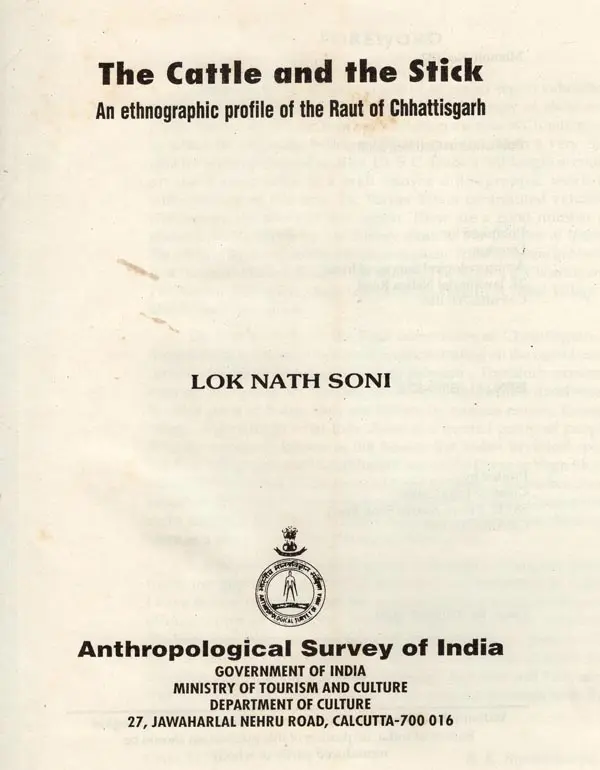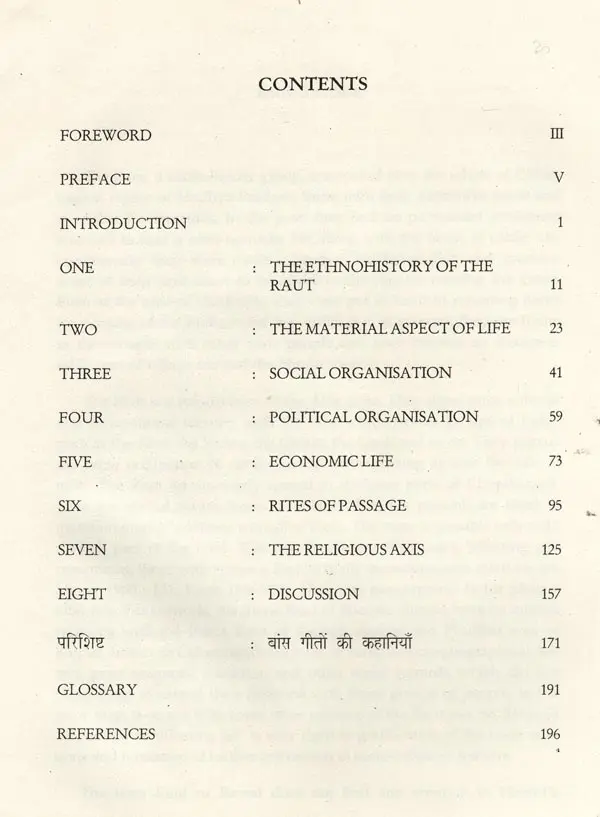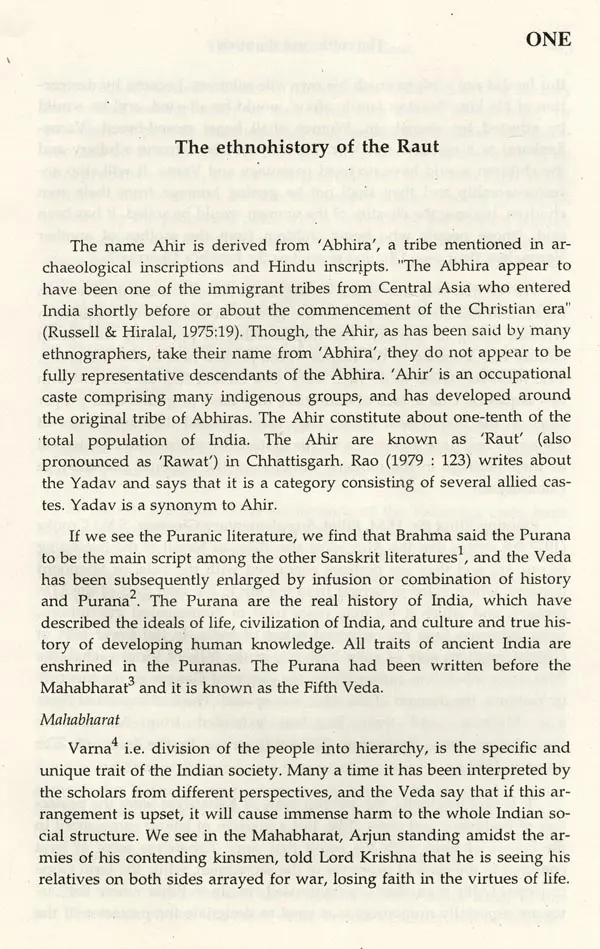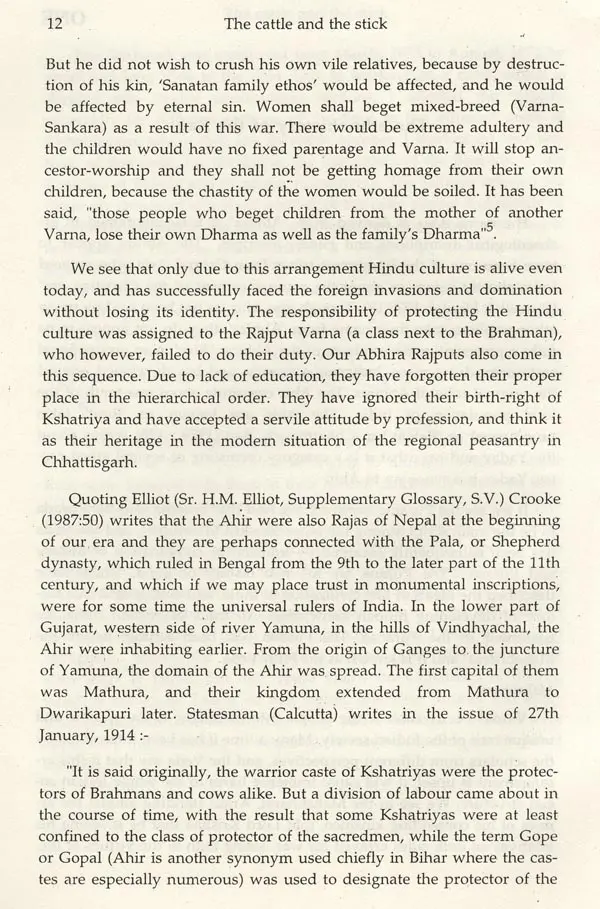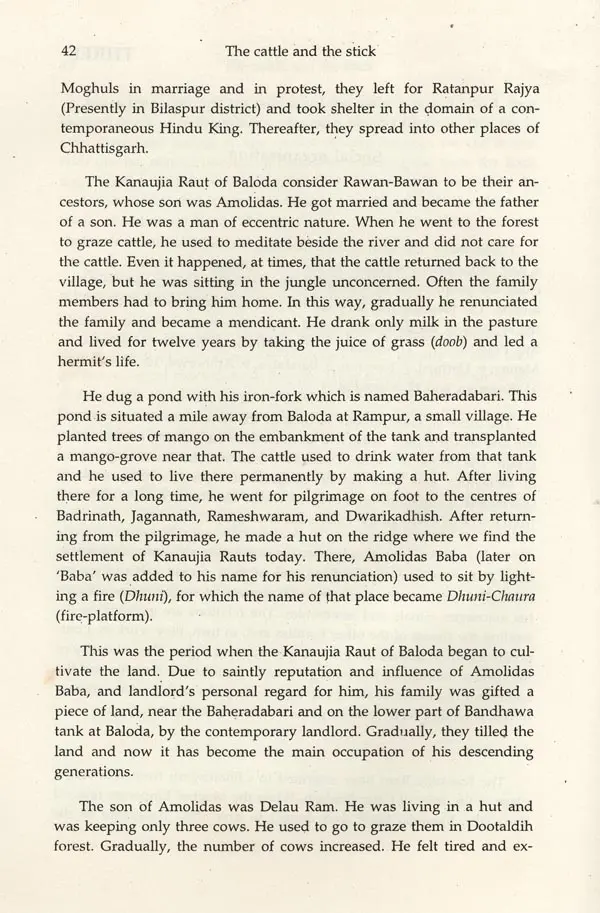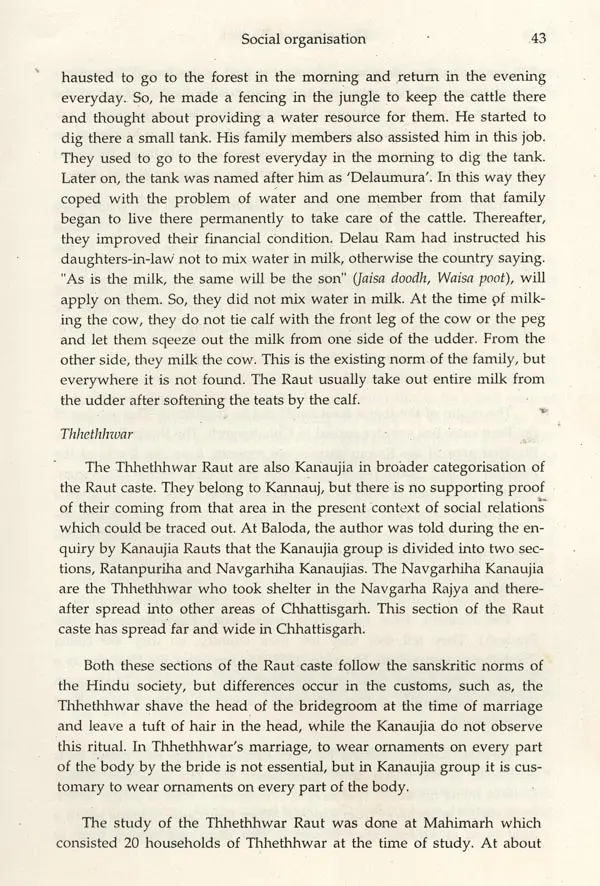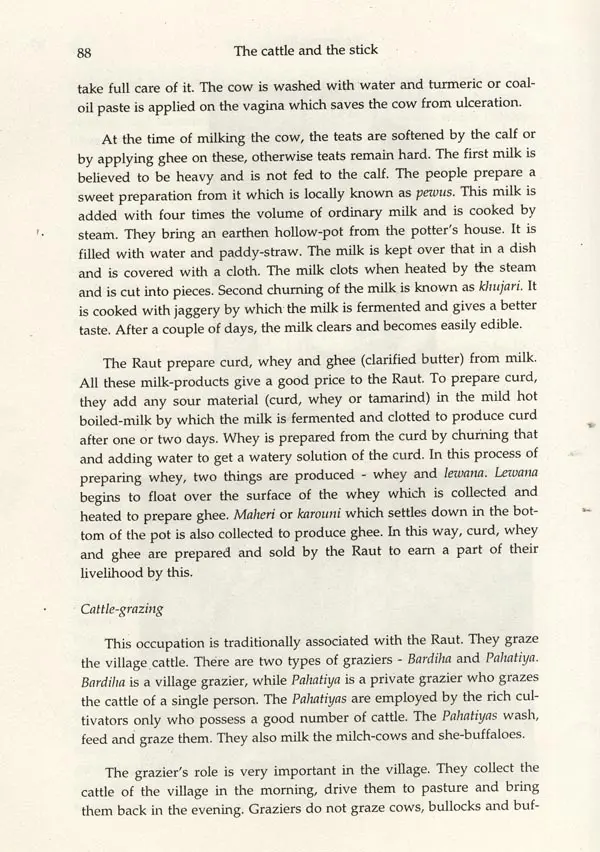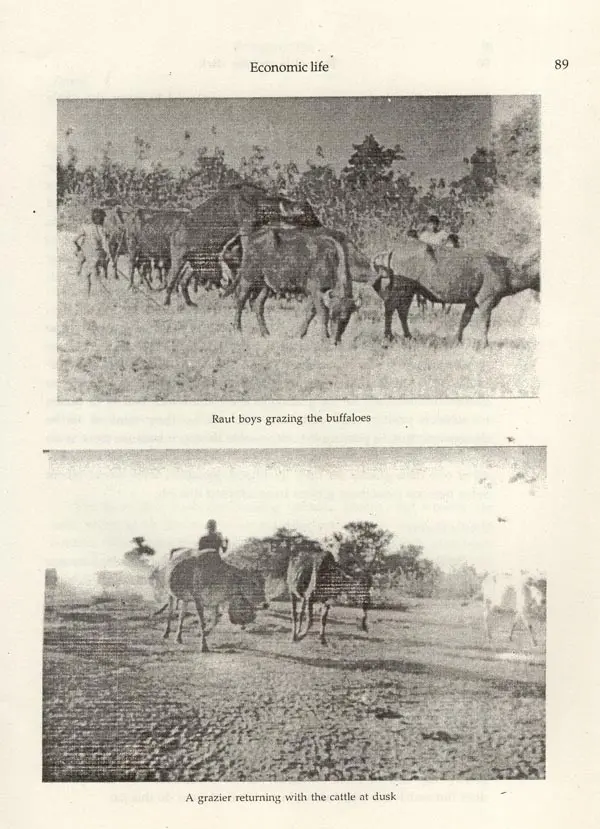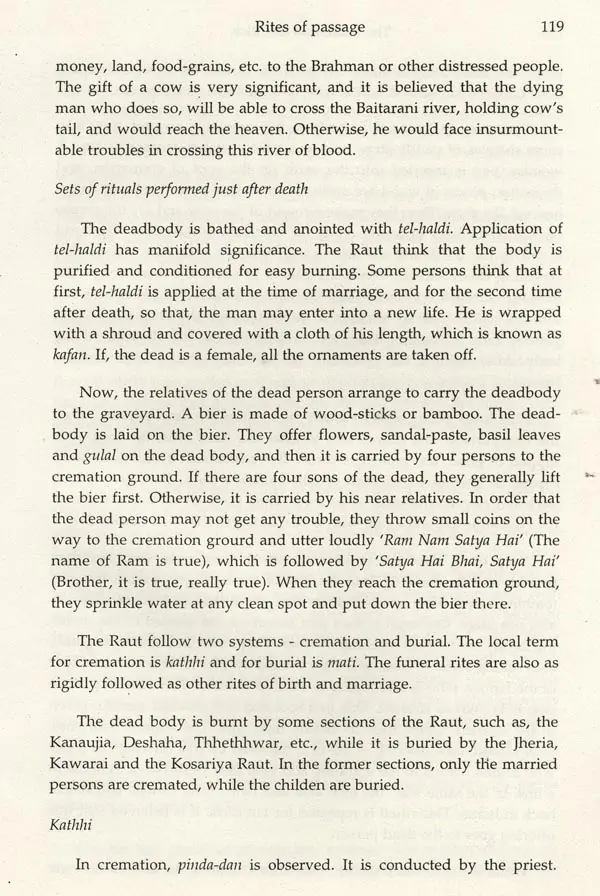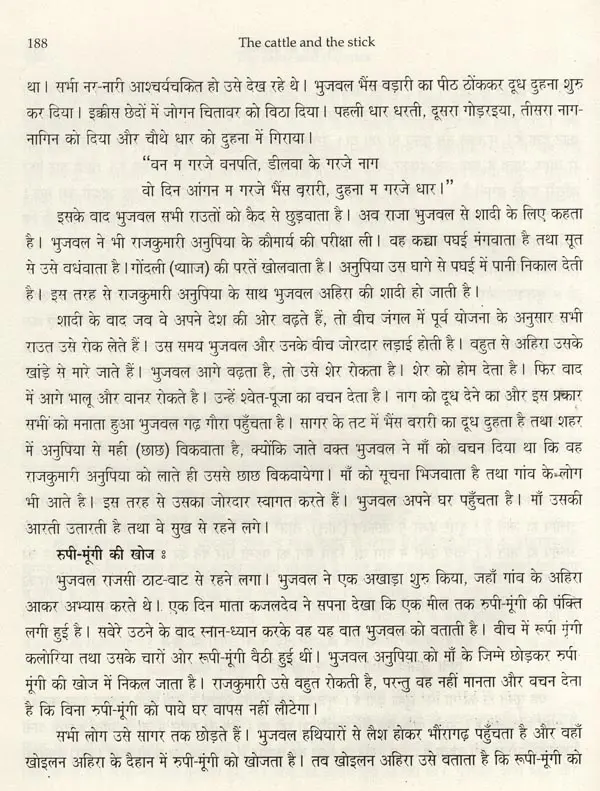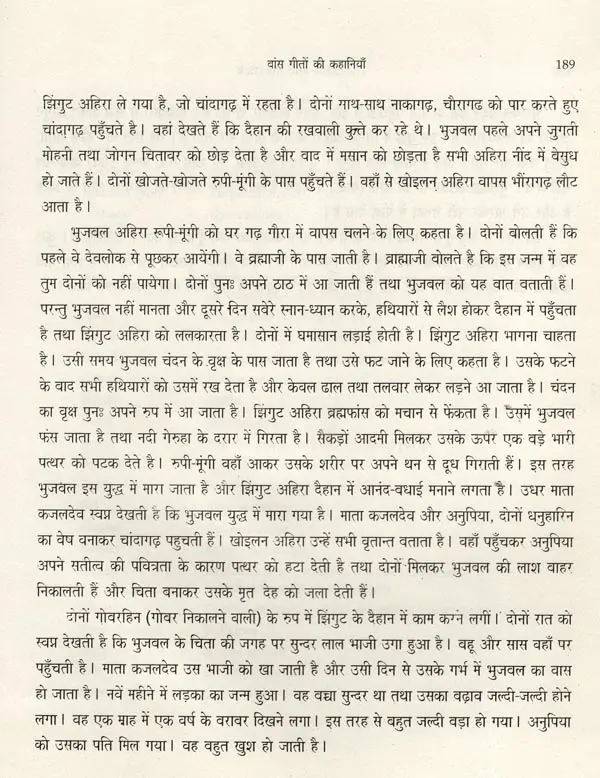About the Book The Raut, who were nomadic cattle- herders in the incipient stage of their civilisation, have now settled down in the villages of Chhattisgarh and have combined agriculture with their traditional occupation of cattle-herding. which shows their shift from pastoral economy to agricultural economy. involving them in the process of pastoral- agriculture continuum. Over a long period of time, systematic modes-socio- economic between the Raut and other local peasant communities have developed in the area. The vocational specialisation of the different castes, which is more or less hereditary, makes them to interact fulfilling the needs of each other. Different caste groups work as segmented functional groups, separate in their caste behaviour and economic mode, but as an integral part of the Indian village society and culture in Chhattisgarh region of Madhya Pradesh.
This ethnographic study throws light on the Raut of Chhattisgarh which is the first comprehensive study on this major caste group. Rauts are widely known as Yadavas who have been playing very significant role in recent times in the national as well as state political scenario of Uttar Pradesh, Bihar and some other states of India, Rich cultural heritage and the functional role of the Raut in the local peasantry have provided them an important place in the regional caste milieu of Chhattisgarh.
About the Author Dr. Lok Nath Soni (b. 1948) obtained his M.A. (1971) and Ph.D. (1979) degrees in Anthropology from Ravishankar University, Raipur, M. P. He has conducted research work in Madhya Pradesh, Maharashtra, Goa, Gujarat, and Rajasthan on various communities, both tribal and non-tribal.
Dr. Soni is the author of the book Bbil Sub-Groups in Caste Milieu published in 1993. He has published 85 research papers in various anthropological journals and in many edited volumes.
Foreword Currently he is attached to the Anthropological Survey of India as its Keeper in the Central Museum at Calcutta.
This book is the revised version of an earlier report submitted by Dr. Lok Nath Soni to the Anthropological Survey of India as a Junior Fellow in 1975. Dr. Soni has worked in the area of Chhattisgarh to which he originally belongs. Chhattisgarh has been a very rich area for anthropological studies. Dr. S. C. Dube's full-length account on the Kamar tribe is a well-known ethnographic work anthropology of this area. Dr. Verrier Elwin contributed valuable writings on the tribes of this region. There are a good number of research publications by the Survey namely, The Dhurwa of Bastar; The Dorla of Bastar; Chhattisgarh: An area study; Tribal Situation in North- East Surguja: Maria Lak-Katha (in Hindi); The Nagesia of Chhattisgarh; The Kodaku of Surguja; Dorla Lok-Katha (in Hindi); A Tribal Village of Middle India and so on.
Preface World anthropology owes a great deal of concern to ethnographic studies of different populations all over the globe. Ethnographic study involves a long-term and face-to-face enquiry of a particular human community or society and presentation of a firsthand account of their so- cial life and culture. In simple terms, it can be defined as a division of anthropology which is solely devoted to the analysis and systematic in- terpretation of a culture in space and time. Its relevance has not been minimised in the recent years also, when there have been many specialisations and developments within the sub-discipline of social/cul- tural anthropology after the sixties. Ethnography has maintained its relevance all through. Empiricism remains the guiding principle of eth- nographic reporting/presentation.
Introduction The Raut, a cattle-herder group, are spread over the whole of Chhat- tisgarh region of Madhya Pradesh, India with their distinctive name and specialised occupation. In the past, they had no permanent settlement and had to lead a semi-nomadic life along with the herds of cattle. Oc- cupationally they were cattle herders, cattle-breeders and graziers. Most of their time used to be spent in the jungles tending the cattle. Even at the time of childbirth, they were not in habit of returning home for nursing of the mother and the child. But, at present, they are living in the villages with other caste people and have become an indispen- sable part of village life and the Hindu society.
Book's Contents and Sample Pages
